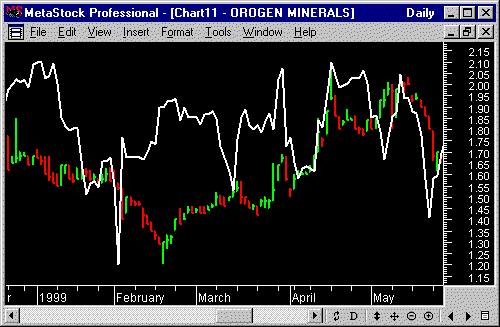|
Vertical Horizontal Filter

Description
The
Vertical Horizontal Filter (VHF)
determines whether prices are in a
trending phase or a congestion phase.
The VHF compares the sum of a one period
rate-of-change to the range between high
and low prices over the specified
period.
The age-old
problem for many trading systems is
their inability to determine if a
trending or trading range market is at
hand. Trend-following indicators such as
MACD and moving
averages, tend to be whipsawed as
markets enter a non-trending congestion
phase. On the other hand, oscillators
(which work well during trading range
markets) tend to overreact to price
pull-backs during trending markets. The
VHF indicator attempts to remedy this by
measuring the "trendiness" of a market.
MetaStock
Pro prompts you to enter the number of
periods to use in the calculation. The
default value is 28.
Interpretation
There are
three ways to use the VHF indicator:
-
VHF
values above or below certain levels
indicate the degree of trending.
The higher the VHF, the higher the
degree of trending.
-
The
direction of the VHF can be used to
determine whether a trending or
congestion phase is developing. A
rising VHF indicates a developing
trend; a falling VHF indicates that
prices may be entering a congestion
phase.
-
The VHF as a
contrarian type indicator. Expect
congestion to follow high VHF
values. Low VHF values may indicate
a trending phase will soon follow.
|